It had been nearly 35 years since Mercedes-Benz had made an appearance at Le Mans as a factory team. It had been longer than that since the German manufacturer had taken victory in the famed event. To return to the top the manufacturer needed speed, but they would also need experience. Jochen Mass was their ideal candidate.
Coupe
Chassis #: 89.C9.A1
View info and historyMass had enjoyed a competitive, but short, Formula One career. He would earn victory in the 1975 Spanish Grand Prix at the impressive Montjuic Park Circuit. Unfortunately, the triumph would be overshadowed by the deaths that would result from Rolf Stommelen's crash.Not long afterward, Mass' Formula One career would suffer a crash of its own. He would leave McLaren as a result of the team's affinity for the faster James Hunt. Then, in 1982, he would be at the center of controversy as a result of his involvement in Gilles Villeneuve's crash that claimed his life. Though he would be acquitted of all responsibility in the matter, his own crash a couple of months later would make it abundantly clear his time in Formula One had drawn to a close. It seemed just as soon as he appeared on the Formula One scene, he was gone. The apparent talent left unfulfilled.
But Jochen wasn't done. He had started out his career racing Alfa Romeo Giulias and Ford Capris. He would be quite successful behind the wheel of cars with fenders, and so, this leant perfectly to him switching over to a career in endurance sportscar racing. Mass' first experience with prototype sportscars would come in the mid-1970s. He would earn a drive with Gelo Racing Team driving a Mirage GR7. Unfortunately, this first experience would not come with a whole lot of success. This would all begin to change when he joined Jacky Ickx and the Porsche factory team.
Coupe
Chassis #: 88.C9.04
View info and historyThis partnership with Porsche and Ickx would be immediately successful leading to victory in the 6 Hours of Mugello at the wheel of a Porsche 935. This would be followed up with another victory in the Vallelunga 6 Hour race in early April of 1976. Then, a couple of weeks later Mass and Ickx would co-drive a Porsche 936 to victory in the Monza 4 Hours. Mass would enjoy a run of success in prototypes and other sportscars that would make his time and frustrations in Formula One all the more difficult to deal with. This success and the frustrating situation at McLaren would lead the German to leave the team for ATS and then for Arrows. But in sportscars, success just kept coming. Behind the wheel of a Porsche 935, Jochen was nearly unbeatable. The only chance many of the competitors would have would be if the Porsche suffered a failure of some kind, which wasn't all that often. Mass' success in sportscars would only be muted by one element in endurance racing—the longer distance events. The German would be practically unbeatable in events six hours or less in length. However, events like the 24 Hours of Daytona, the 12 Hours of Sebring and, of course, the 24 Hours of Le Mans would all seemingly elude his reach. 
Coupe
Chassis #: 89.C9.A1
View info and historyAs in the case of the 1978 24 Hours of Le Mans, Mass would often start the race in a strong position. At the wheel of a 936, the '78 edition of the French classic would see Mass start from pole with his co-drivers Jacky Ickx and Henri Pescarolo. However, an accident throughout the course of the race would bring the great potential to naught. In the late 1970s and in 1980, Mass would mainly focus on his Formula One career. And, with teams like ATS and Arrows, it would take all of his efforts just to be able to make it into some races. It was clear the German was no longer one of the fastest, but his combination of car-control and speed made him still one of the best in the world. In 1981, Mass would come to drive for Joest Racing. At the wheel of a 935 and 908, success would continue to find him. He would secure a number of class victories and would actually finish Le Mans that year driving a Porsche 936 along with Vern Schuppan and Hurley Haywood. While this would be a strong result, it would be a little disappointing given the fact the number 12 Porsche had started the race from 2nd on the grid. 
Coupe
Chassis #: 89.C9.A1
View info and historyThen came the difficult season in 1982. Of course the darkest moment would come in May at Zolder. Then there would be the accident in France in July that would bring about the end of Mass' Formula One career. But as difficult a season as 1982 would prove in Formula One, prototype sportscars would have something else in hand entirely for Jochen, and it would start at a place he had struggled for most of his career. Porsche would begin work on their brand-new 956 just about nine or ten months before. Those wind tunnel tests would then lead to the full mock-up of what would become the 956. The car was brand new, but thoroughly tested, just like the drivers that would make up the three-car team.
Coupe
Chassis #: 89.C9.A1
View info and historyJacky Ickx and Jochen Mass had proven to be a rather unbeatable combination at Porsche throughout the last half decade. However, the team would choose to split these two dominant up to help strengthen the team's lineup throughout the three entries. Therefore, Mass would be partnered with Vern Schuppan for the 50th running of the 24 hour race. Once again, Mass would find himself in a strong starting position. Having posted a record lap around the 8.4 mile circuit, Mass would initially set the mark. This would be eclipsed by Ickx who would end up taking pole. The brand new Porsches lined up along the front row. The third would be a few rows back after struggling in practice. Many questions the reliability of the Porsche over the course of the 24 hour race. However, with drivers like Mass at the wheel, Porsche not only were fast, but also not foolhardy. Nevertheless, neither of the Porsches would be driven at pedestrian speeds over the course of the race. 
Coupe
Chassis #: 89.C9.A1
View info and historyThe race would end in a fairytale manner for Porsche and in a rather bittersweet fashion for Mass. After being one of the fastest around the circuit all throughout practice and qualifying, the number 2 956 would have to settle for a 2nd place finish behind its sister car by some three laps margin. Still, it was the best result for Mass at Le Mans in his rather frustrating career at the circuit. This result had to give breath to the hope of an overall victory sooner rather than later. However, the sooner would not prove very successful for Jochen, at least not around the major endurance races on the calendar. There would be victories at Spa, Fuji and Kyalami. However, Le Mans would continue its evasive maneuvering. Even when partnered with the fast Stefan Bellof in 1983, the race would continue to remain out of reach. Jochen had won nearly every other race possible, but he just couldn't get it done at the more famous endurance races. This would begin to change in 1985 and 1986 when he finally came through to finish 3rd overall at the 24 Hours of Daytona. Then came the victory in the 12 Hours of Sebring in 1987. While with Porsche, Mass' talents behind the wheel would be allowed to shine and his success was a testament to his skills as a driver. However, while Le Mans showed no favoritism, it certainly seemed as though it had its enemies and the German apparently was one of them. It seemed the partnership with Porsche would not help Mass achieve what he still longed for, and perhaps it was time to move on. Following the 1987 season, the veteran Mass would make the move to another German manufacturer making its return to motor racing. 
Coupe
Chassis #: 89.C9.A1
View info and historyMercedes-Benz has withdrawn from motor racing following the end of the 1955 season, and especially following the tragic moments that transpired after Pierre Levegh's Mercedes launched into the air off the back of Lance Macklin's Healey. It was the darkest day in motorsports history and a very understandable dark cloud Mercedes had to live with for much too long. However, by the end of the 1980s, the manufacturer was making a return to motorsports. The first stage in that return would be where the dark clouds loomed. It was time for the company to exorcize its demons and return to Le Mans. Though officially teamed with and named Team Sauber Mercedes, it was a factory Mercedes team. And, because it was a factory team, the best possible drivers were needed for the new C9. Enter Jochen Mass. Mass' first race with the team would come in the Jerez 800 Kilometers at the start of the 1988 season. Paired with Jean-Louis Schlesser and Mauro Baldi, Jochen would find himself at the wheel of a very potent car. Not only would the car start from pole, but it would go on to take the victory as well. A 2nd place in the Monza 1000 Kilometers and the Silverstone 1000 Kilometers would follow. Not since the debut of the 956 had Mass found himself in such a strong, but brand new, car. 
Coupe
Chassis #: 89.C9.A1
View info and historyUnfortunately, the speeds the new Mercedes was capable of reaching down the three-mile long Mulsanne would have its drawbacks. The Sauber had blown tires before, but the fast and long straight only invited more troubles. And, when Klaus Niedzwiedz had a tire blow on him in practice, that was it. Sauber-Mercedes would withdraw and Jochen would lose a chance at an overall victory. Mercedes would return the following year, however. By that time, Mass would already enjoy a couple of victories with his new team. The Michelin tires would be improved, as would the C9. A couple of 2nd places at Suzuka and Dijon would convince the team it was ready to make a run at Le Mans. The fastest of the Mercedes drivers was, arguably, Jean-Louis Schlesser. The Frenchman would often be paired with the experience and steadiness of Jochen Mass in the shorter events. This would prove to be a pairing nearly as successful as when Mass was partnered with Ickx. Schlesser would not go to Le Mans in '88 as a result of his concerns about the long and fast Mulsanne. However, with most of the concerns surrounding the tires and the car sorted, he would head to the French city. He would not, however, be paired with Mass. As in the days with Porsche, Mercedes would split up its fabulous pairing. Mass would drive with Manuel Reuter and Stanley Dickens. In this car, Jochen provided the speed and the experience. 
Coupe
Chassis #: 89.C9.A1
View info and historyThere is a good reason why the German automobiles of the 1930s were called Silver Arrows, and it wasn't just because they stripped the paint to help shed pounds. Reaching speeds of around 200 mph before the 1940s is reason enough. It would be fitting then, in the final year before chicanes would be added along the Mulsanne, that the Sauber-Mercedes would provide one last record that would never again be beaten. Throughout practice the C9 would be reaching speeds in excess of 240 miles per hour along the straight. The large turbocharged V8 would provide a mixture of rumble and whine, which would culminate in the perfect pitch for fast speeds down the Mulsanne. Eventually, when the conditions became just right, the speeds jumped even more until Dorchy's speed of the previous year would be beaten, though unofficially. Firmly aware of their speeds down the straight, the Mercedes drivers would aim toward the front row of the starting grid. The number 62 car, with Schlesser, Jabouille and Cudini would start from pole. The number 61 C9 would start 2nd on the grid. Unfortunately, the third Mercedes, the number 63 car driven by Mass and his crew, would struggle in qualifying. The slowest of the three Silver Arrows would start from 11th on the grid. Though starting well back in the Group C field, the race was going to be long and eventful, and success would come by avoiding the many traps and pitfalls along the way. Therefore, unlike in times past when he started from the front row, Jochen would, perhaps, be in a much stronger position starting further back. 
Coupe
Chassis #: 89.C9.A1
View info and historyUnder sunny skies the cars would head to the start of the race. When the tricolor had been shown to the field it was Baldi in the number 61 Mercedes that would lead into the lead. The number 63 Mercedes would also lose out on a spot or two heading up to the Dunlop chicane for the first time. Throughout the first part of the race Mass' Mercedes would remain tucked in up toward the front of the field but not up on point. Mass' hopes would appear to be in severe trouble when the number 63 Mercedes ran over some debris due to an earlier crash. However, all concerns would be put at ease and Jochen and his crew set their sights on being at the front.The Mercedes sister-cars would remain right up near the point, or on point, throughout the early stages. But then, as the shadows began to lengthen and day turned to night, the Jaguars would sprint to the fore. This would come after a couple of its own cars suffered early punctures and had their progressed hindered. The battle at the front would be between Jaguars and Porsches. Mass had left Porsche for a seat with Mercedes. This suddenly appeared to be a misguided idea as the fast Mercedes ran quietly throughout the night. Jochen would remain in the hunt throughout the first six hours of the race, but would lose ground as Saturday turned to Sunday.As with back in the 1952, the last time Mercedes had won at Le Mans, the Mercedes name would become synonymous with reliability. The 1989 edition of the race would be no different as oil problems would slow the big cats down while each of the Porsches would run into troubles as well. There, ready to pick of the pieces and carry on without any trouble would be Mercedes, particularly car number 63. The only car to be enjoying a trouble-free run was the slowest of the Mercedes. Utilizing skill and experience over outright speed, Jochen would help captain his team of drivers into the lead by the early morning hours on the 11th of June.The number 63 Mercedes would build up an advantage of three laps over its sister-car throughout the course of the race. Heading into the afternoon hours of the 11th, all that was left for Mass and his fellow drivers to do was to stay out of trouble and bring the car home. As Jochen's career could attest, this was easier said than done. Given the fact the Sauber-Mercedes had not started the race the year before, the 1989 running of Le Mans well and truly was the first time the German mark had competed in the race since the mid-1950s. This reality would make the last scenes of the race all the more incredible as the three Mercedes would meet up together out along the course to complete the final lap together. Mercedes had come with three cars and three cars were heading to the finish line first, second and fifth. But only one of them was in the lead. Jochen Mass would be at the wheel of the number 63 C9 in the final moments of the race. It would be a truly memorable moment to behold as the man that had come so close and that had also experienced such disappointment led the trio of Silver Arrows around the circuit for one last lap. Mass' victory at Le Mans seemed certain well before it would ever become a reality. In many respects there was some question as to whether or not it would ever happen for the German. He had left one sportscar powerhouse in Porsche to come to another strong, but inexperienced team in Mercedes. Nonetheless, the team would be able to rely upon Mass' vast wealth of experience and depth and they would ride his back all the way to the momentous victory at Le Mans. Mercedes had exorcised its demons. Back in 1955, a Mercedes practically disappeared and disintegrated into a sea of spectators taking many lives with it. This time, three Mercedes prototypes would disappear into a sea of humanity welcoming the Germans home, welcoming them back into their hearts. And the man that helped lead the effort, the man at the head of that train would also be one the fans also wanted to embrace and finally call a champion of their hearts and of Le Mans.Sources:
1989-Le Mans-The Start of the Race. Video. (1989). Retrieved 4 February 2014 from http://www.youtube.com/watch?v=OkFmonOUWcY.Le Mans 1989 Part 2. Video. (1989). Retrieved 4 February 2014 from http://www.youtube.com/watch?v=iyAcOAC0F5k.Le Mans-1989-Finish. Video. (1989). Retrieved 4 February 2014 from http://www.youtube.com/watch?v=k6_L-3UBVPg.'Le Mans 1989 Part 3. Video. (1989). Retrieved 4 February 2014 from http://www.youtube.com/watch?v=UQrlmte2BNM.'24 Hours of Le Mans 1989: Sauber-Mercedes Reaches New Heights', (http://www.24h-lemans.com/en/news/24-hours-of-le-mans-1989-sauber-mercedes-reaches-new-heights_2_2_1746_13708.html). 24 Heures Du Mans. http://www.24h-lemans.com/en/news/24-hours-of-le-mans-1989-sauber-mercedes-reaches-new-heights_2_2_1746_13708.html. Retrieved 4 February 2014.'Drivers: Jochen Mass', (http://www.grandprix.com/gpe/drv-masjoc.html). GrandPrix.com. http://www.grandprix.com/gpe/drv-masjoc.html. Retrieved 4 February 2014.'Complete Archive of Jochen Mass', (http://www.racingsportscars.com/driver/archive/Jochen-Mass-D.html?page=11). Racing Sports Cars. http://www.racingsportscars.com/driver/archive/Jochen-Mass-D.html?page=11. Retrieved 4 February 2014.Harmeyer, Bob. '1982 24 Hours of Le Mans-Profile and Photo Gallery', (http://www.sportscardigest.com/1982-24-hours-of-le-mans-profile-and-photo-gallery/). SportsCarDigest: The Sports, Racing and Vintage Car Journal. http://www.sportscardigest.com/1982-24-hours-of-le-mans-profile-and-photo-gallery/. Retrieved 4 February 2014.'Le Mans 24 Hours 1982', (http://www.racingsportscars.com/photo/Le_Mans-1982-06-20.html). Racing Sports Cars. http://www.racingsportscars.com/photo/Le_Mans-1982-06-20.html. Retrieved 4 February 2014.From the Archives: Porsche Triple Victory in Le Mans 1982. Video. (1982). Retrieved 4 February 2014 from http://www.youtube.com/watch?v=C2iCwLt9nBU.
By Jeremy McMullen
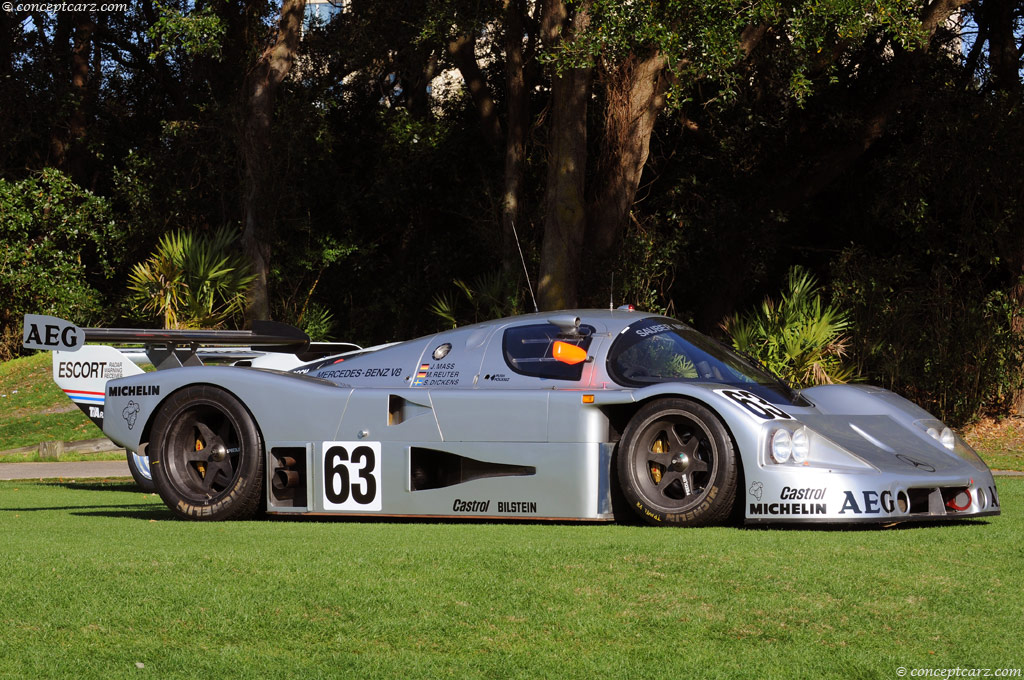
Coupe
Chassis #: 89.C9.A1
View info and history
But Jochen wasn't done. He had started out his career racing Alfa Romeo Giulias and Ford Capris. He would be quite successful behind the wheel of cars with fenders, and so, this leant perfectly to him switching over to a career in endurance sportscar racing. Mass' first experience with prototype sportscars would come in the mid-1970s. He would earn a drive with Gelo Racing Team driving a Mirage GR7. Unfortunately, this first experience would not come with a whole lot of success. This would all begin to change when he joined Jacky Ickx and the Porsche factory team.
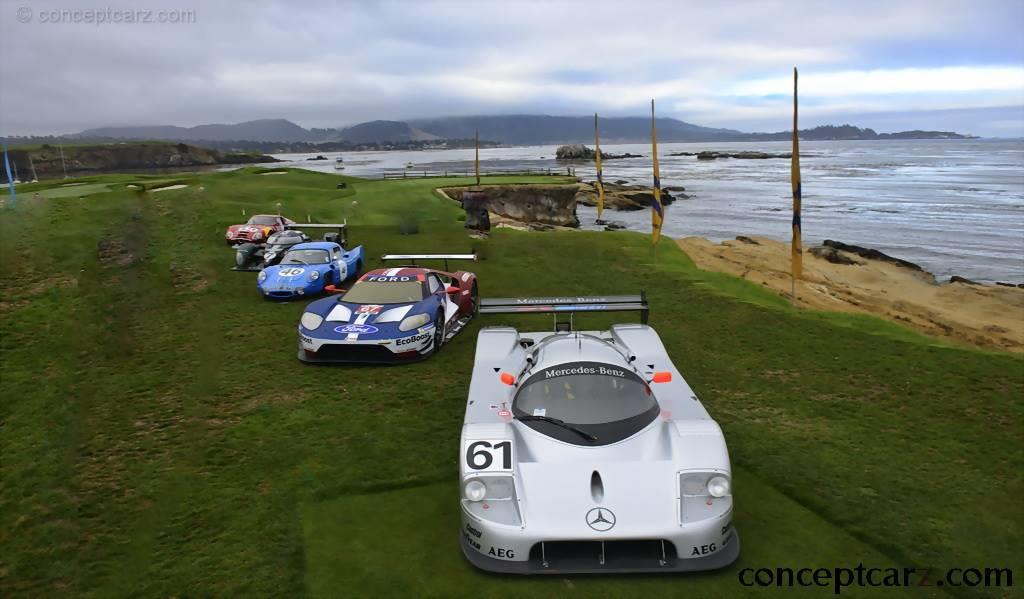
Coupe
Chassis #: 88.C9.04
View info and history
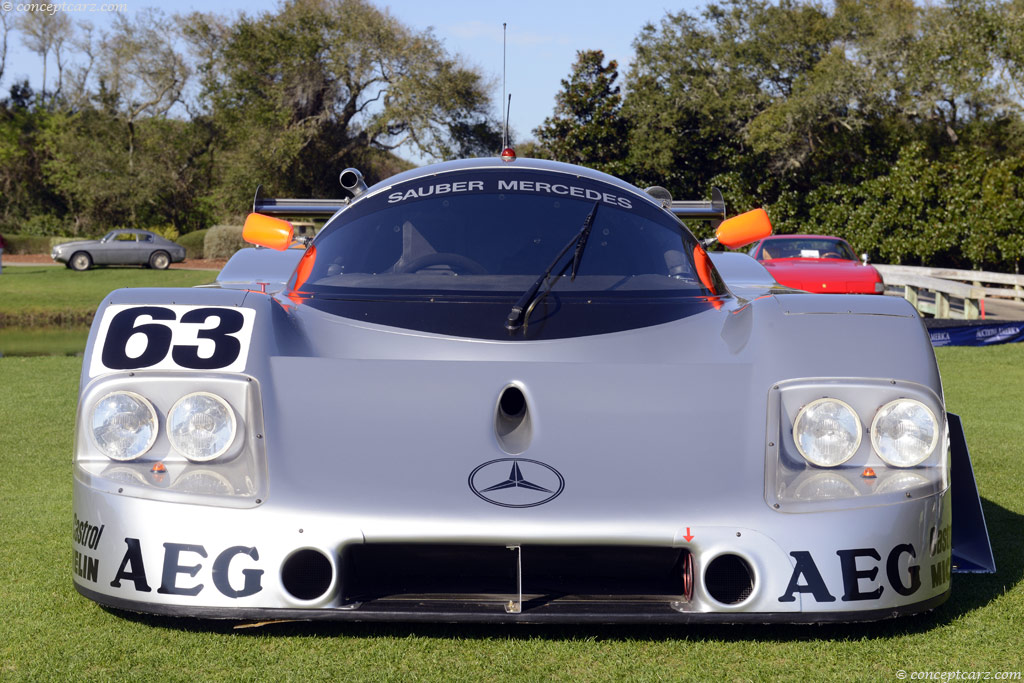
Coupe
Chassis #: 89.C9.A1
View info and history
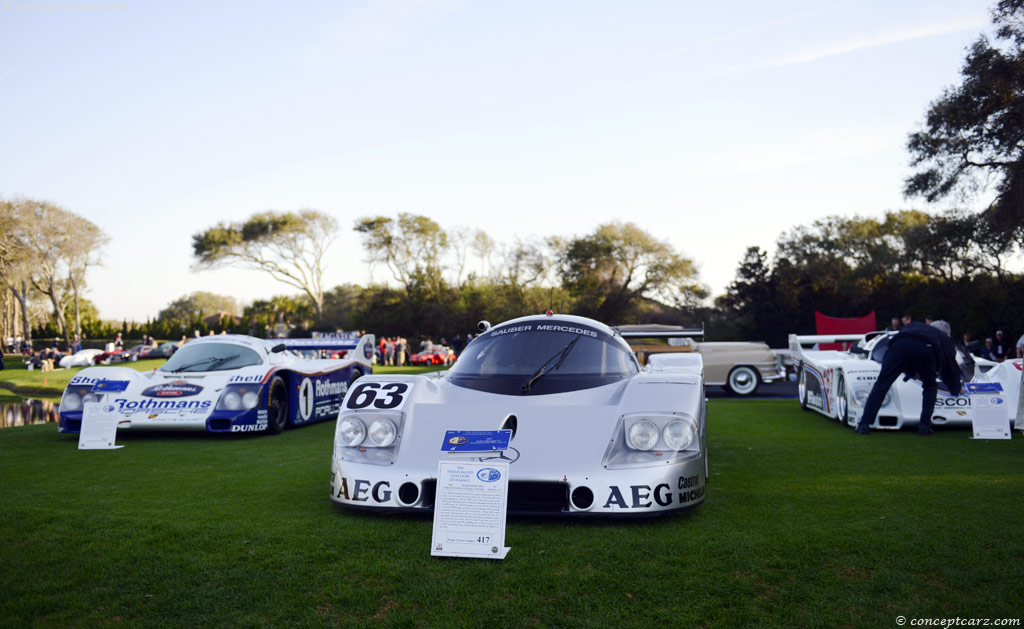
Coupe
Chassis #: 89.C9.A1
View info and history
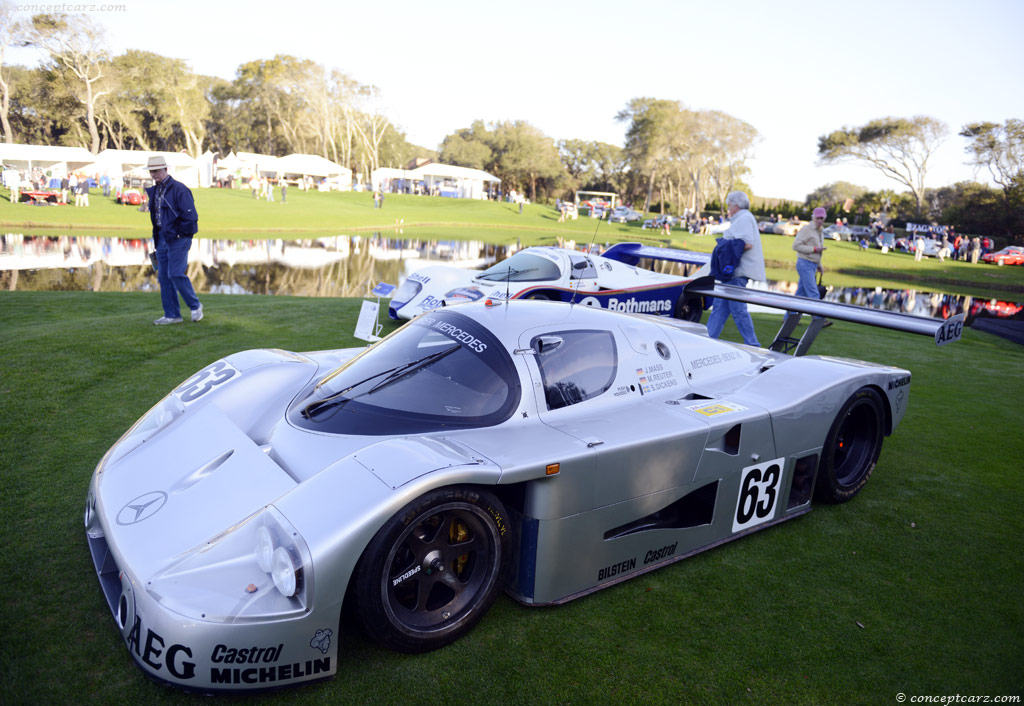
Coupe
Chassis #: 89.C9.A1
View info and history
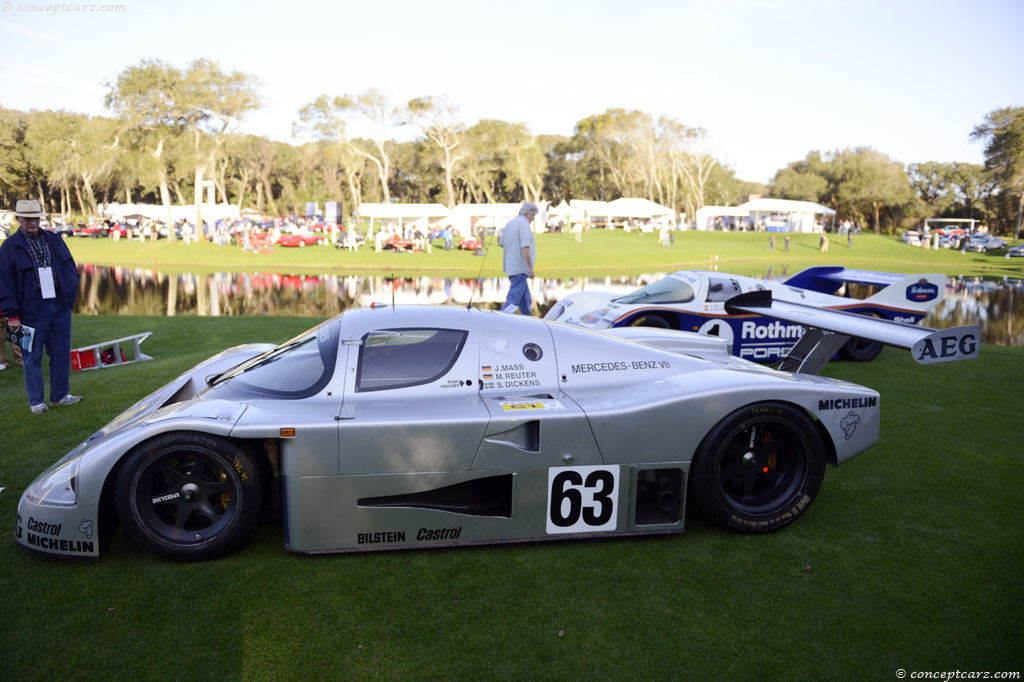
Coupe
Chassis #: 89.C9.A1
View info and history
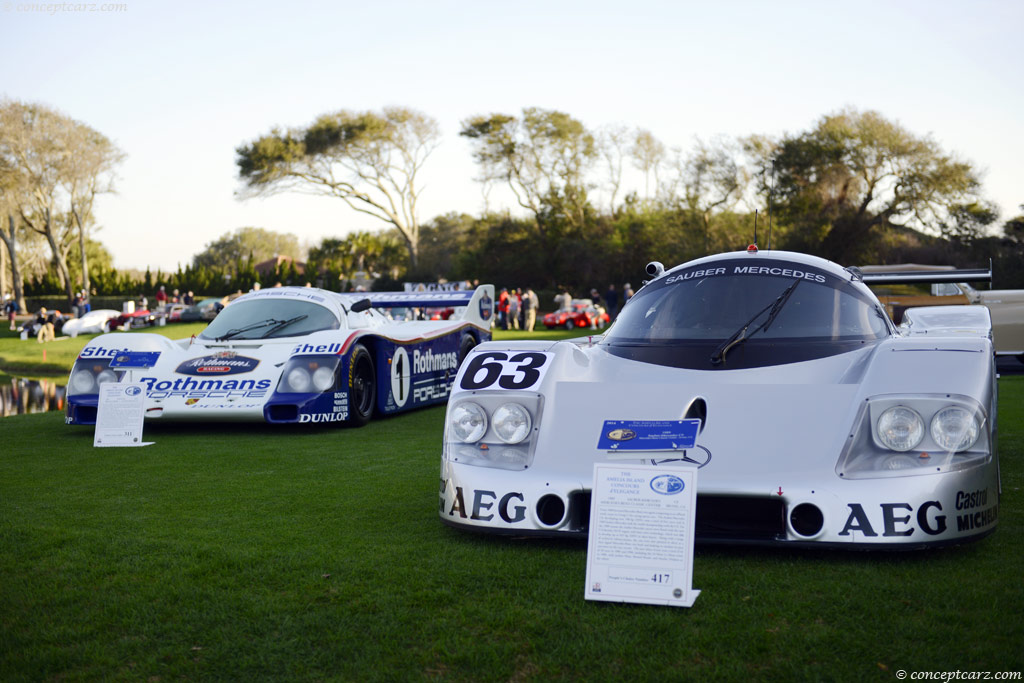
Coupe
Chassis #: 89.C9.A1
View info and history
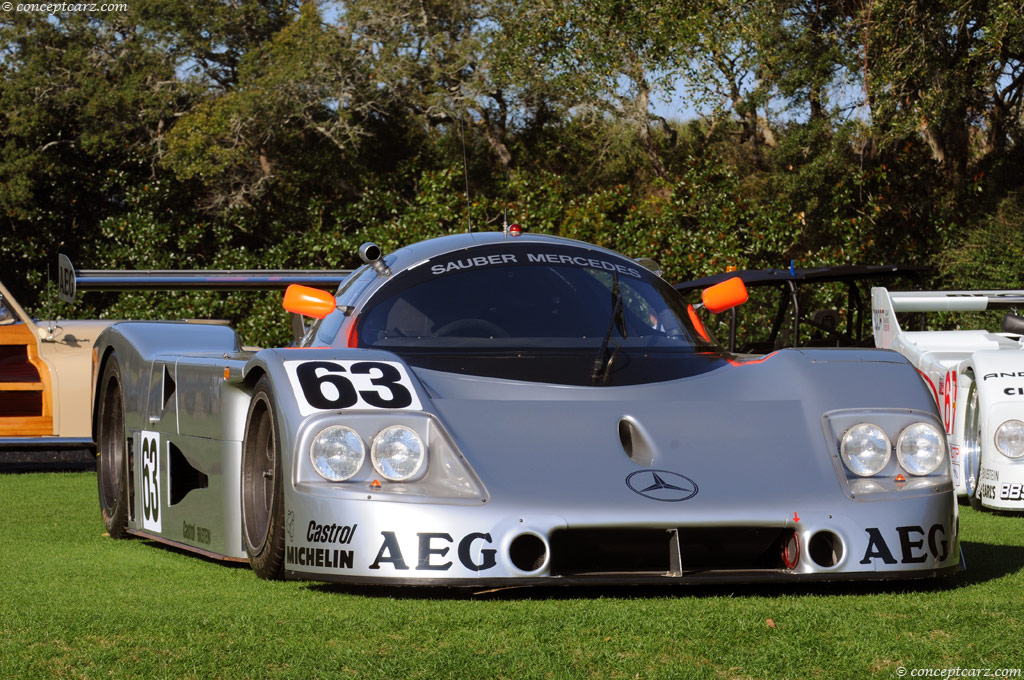
Coupe
Chassis #: 89.C9.A1
View info and history
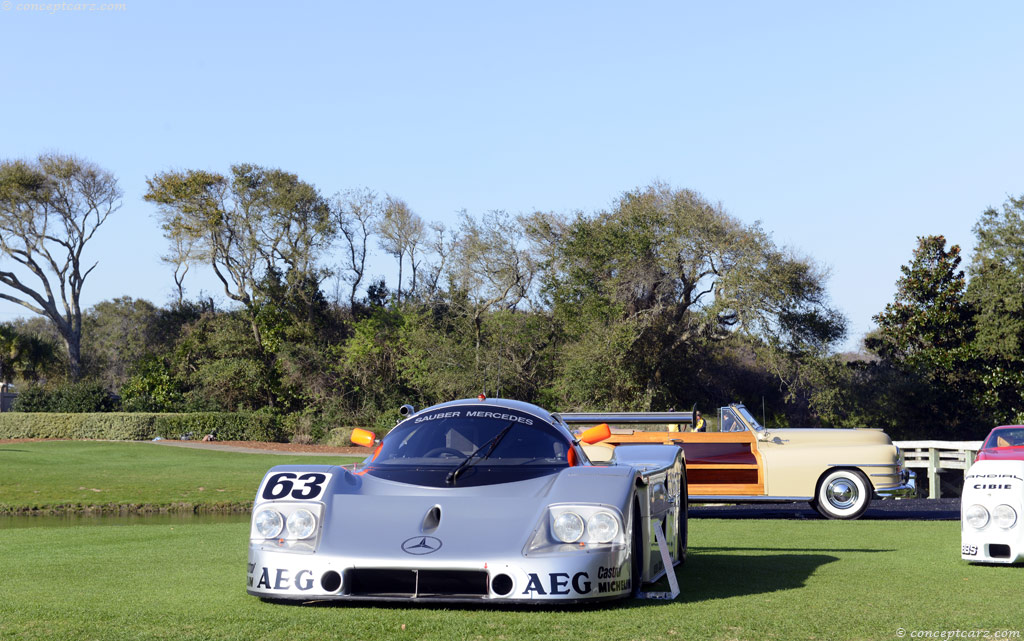
Coupe
Chassis #: 89.C9.A1
View info and history
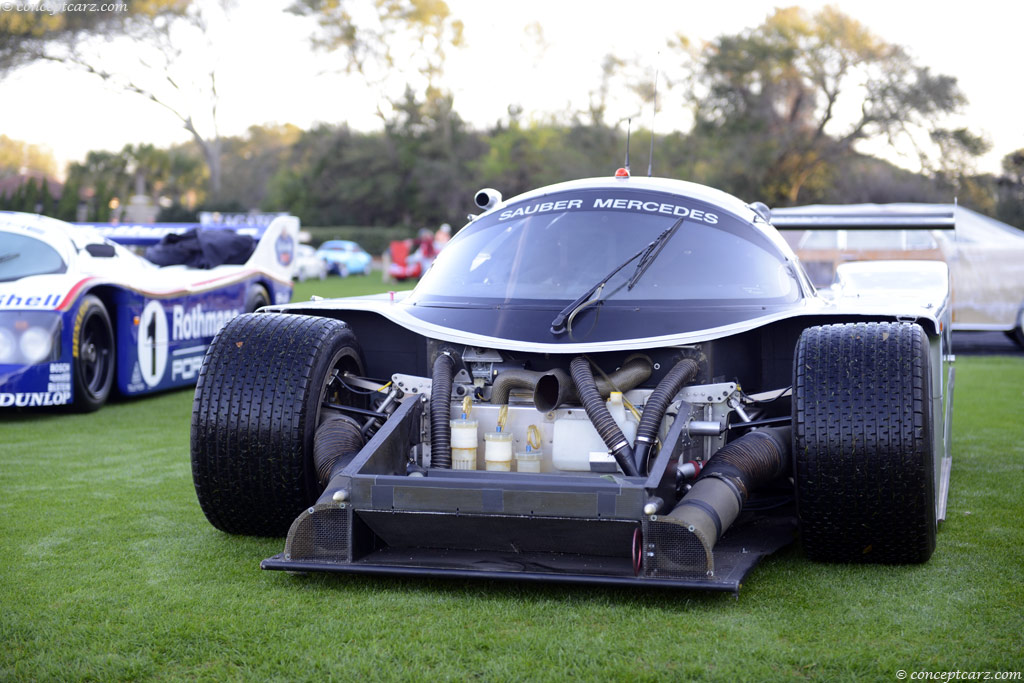
Coupe
Chassis #: 89.C9.A1
View info and history
1989-Le Mans-The Start of the Race. Video. (1989). Retrieved 4 February 2014 from http://www.youtube.com/watch?v=OkFmonOUWcY.Le Mans 1989 Part 2. Video. (1989). Retrieved 4 February 2014 from http://www.youtube.com/watch?v=iyAcOAC0F5k.Le Mans-1989-Finish. Video. (1989). Retrieved 4 February 2014 from http://www.youtube.com/watch?v=k6_L-3UBVPg.'Le Mans 1989 Part 3. Video. (1989). Retrieved 4 February 2014 from http://www.youtube.com/watch?v=UQrlmte2BNM.'24 Hours of Le Mans 1989: Sauber-Mercedes Reaches New Heights', (http://www.24h-lemans.com/en/news/24-hours-of-le-mans-1989-sauber-mercedes-reaches-new-heights_2_2_1746_13708.html). 24 Heures Du Mans. http://www.24h-lemans.com/en/news/24-hours-of-le-mans-1989-sauber-mercedes-reaches-new-heights_2_2_1746_13708.html. Retrieved 4 February 2014.'Drivers: Jochen Mass', (http://www.grandprix.com/gpe/drv-masjoc.html). GrandPrix.com. http://www.grandprix.com/gpe/drv-masjoc.html. Retrieved 4 February 2014.'Complete Archive of Jochen Mass', (http://www.racingsportscars.com/driver/archive/Jochen-Mass-D.html?page=11). Racing Sports Cars. http://www.racingsportscars.com/driver/archive/Jochen-Mass-D.html?page=11. Retrieved 4 February 2014.Harmeyer, Bob. '1982 24 Hours of Le Mans-Profile and Photo Gallery', (http://www.sportscardigest.com/1982-24-hours-of-le-mans-profile-and-photo-gallery/). SportsCarDigest: The Sports, Racing and Vintage Car Journal. http://www.sportscardigest.com/1982-24-hours-of-le-mans-profile-and-photo-gallery/. Retrieved 4 February 2014.'Le Mans 24 Hours 1982', (http://www.racingsportscars.com/photo/Le_Mans-1982-06-20.html). Racing Sports Cars. http://www.racingsportscars.com/photo/Le_Mans-1982-06-20.html. Retrieved 4 February 2014.From the Archives: Porsche Triple Victory in Le Mans 1982. Video. (1982). Retrieved 4 February 2014 from http://www.youtube.com/watch?v=C2iCwLt9nBU.
By Jeremy McMullen
1989 Sauber C9 Vehicle Profiles
Recent Vehicle Additions
Related Automotive News

1989 24 Hours of Le Mans: Mass and Mercedes Slay its Dragons
It had been nearly 35 years since Mercedes-Benz had made an appearance at Le Mans as a factory team. It had been longer than that since the German manufacturer had taken victory in the famed event. To return to the top the manufacturer needed speed,...

PORSCHE MOTORSPORTS PRE-EVENT NOTES. 24 HOURS OF LE MANS
The #20 Porsche 919 Hybrid with drivers (left to right) Mark Webber, Timo Bernhard, and Brendon Hartley, at Le Mans tech inspection earlier today in the town of Le Mans.
Dateline. Le Mans, France
Circuit. Circuit de la Sarthe
Track LengthTurns....

Techno Classica 2014: more than 30 racing cars to celebrate 120 years of Mercedes-Benz motor racing history
Cars that were the heroes of magical moments put their stamp on this high-powered, most comprehensive show presentation
With more than 30 vehicles, Mercedes-Benz Classic presents motor racing history in all its unique breadth and depth
120 years o...

1989 24 Hours of Le Mans: Mass and Mercedes Slay its Dragons
It had been nearly 35 years since Mercedes-Benz had made an appearance at Le Mans as a factory team. It had been longer than that since the German manufacturer had taken victory in the famed event. To return to the top the manufacturer needed speed,...

Jochen Mass: The Mass-ter Breakthrough
The city of Munich, Germany is one of the leading academic cities in the world hosting numerous, and famous, universities within its limits. It would be against this backdrop, in September of 1946, that Jochen Richard Mass would be born. Fittingly, he...

1982 24 Hours of Le Mans: Capping Off Le Mans in the Most Dominant Way
Group 6 cars had long been ruled out by the rules makers. Yet, despite the normal amount of investment and evolution that would normally take place, the Porsche 936 would continue to be a dominant force at Le Mans throughout the late 1970s. But then...




















